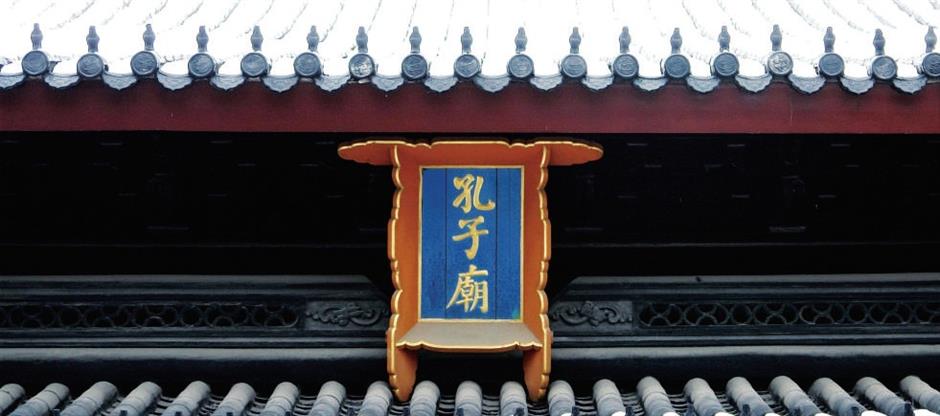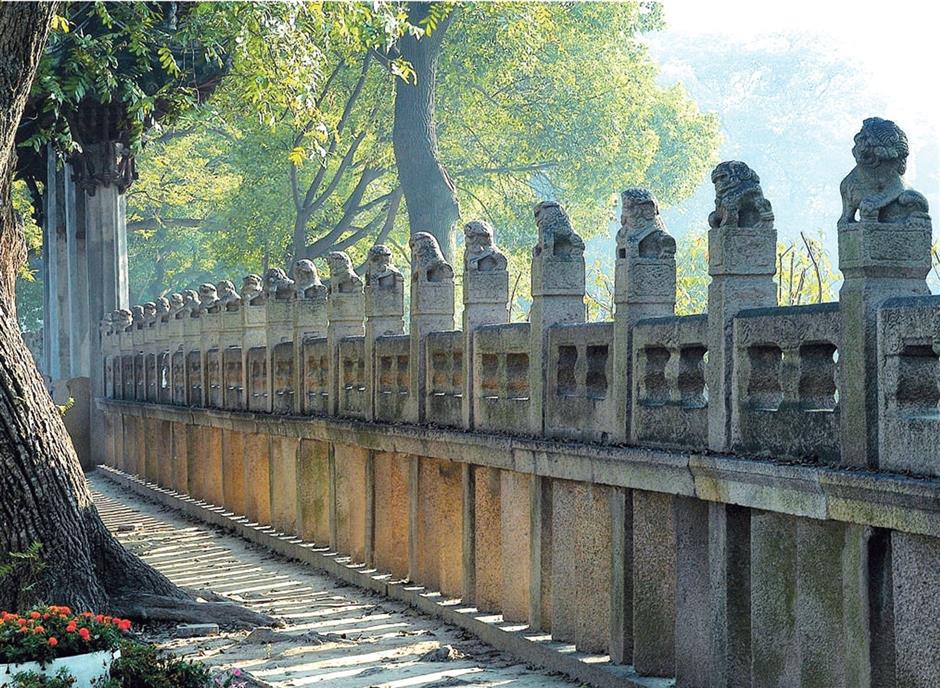
Jiading’s Confucius Temple
The Confucius Temple in Jiading covers an area of 1.13 hectares. Built 800 years ago, it has undergone more than 100 repairs and was famous as the best Confucius Temple in the central area of Wu, which included today’s Jiangsu Province and Shanghai.
Jiading is known as a “town of education” and the temple was the source. It was built the second year the county of Jiading was officially established.
Jiading’s first magistrate Gao Yansun ordered the building of Dacheng Palace and Huacheng Hall (today’s Minglun Hall) for educational purposes despite a limited budget. They were the first two buildings of the temple.
It was not until 30 years later, in 1249, that the temple began to take shape. Today, it is one of the biggest and best preserved Confucius Temples in jiangnan (areas to the south of the lower reaches of the Yangtze River).
Most of the temple is in the style of the Ming (1368-1644) and Qing (1644-1911) dynasties but there are still some components made in the Song (960-1279) and Yuan (1271-1368) dynasties and sites built during the same period.
The existing buildings are Lingxing Gate, Panchi Pond, Panchi Pond Bridge, Dacheng Gate, Minghuan Shrine, Xiangxian Shrine, Zhongxiao Shrine, Dongxi Colonnade, Dacheng Palace, Limen Gate, Minglun Hall, Yimen Gate, Danghu Academy and three stone arches Yanggao, Xingxian and Yucai.
Arches and guardian lions
The street in front of Lingxing Gate is Xuedian Street. Xuedian in Chinese literally means palace of education. The street is paved with cobblestones.
At both ends of the street there are two arches — Xingxian and Yucai. Xingxian was built in 1249 and Yucai in 1353. Xingxian in Chinese means rise of the virtuous and Yucai means talent cultivation.
The two stone arches symbolize education as the best way to cultivate talent who would later serve the country.
The Yanggao arch was built in 1506 opposite Lingxing Gate and between the other two arches. Yanggao in Chinese means to worship Confucius for his profound knowledge.
Yanggao, with its four stone pillars standing at 7 meters, is the tallest of the three. The design is simple but exquisite.
Two guardian lions are on the south side of Yanggao. They were moved from the former site of the Shandong Association at the intersection of Zizhong Road and Chongqing Road S. in the 1970s. Each lion is 1.6 meters tall and 82 centimeters wide.
The three arches are linked by stone rails with 72 stone lions atop to represent the 72 best disciples of Confucius.
 Ti Gong
Ti GongThe 72 stone lions atop the arches represent the 72 best disciples of Confucius.
Lingxing Gate and Panchi Pond
Lingxing Gate, the first gate of Confucius Temple, was built in 1353. Lingxing in Chinese means star of wisdom. The gate is decorated with carp and dragon. In Chinese tradition, a carp that leaps over the dragon’s gate would be transformed into a dragon.
Hence, the gate has an auspicious meaning that any student who walks through it would become part of the backbone of the country.
Behind the Lingxing Gate is a courtyard. Previously, 60 cypresses were planted here. The only one that exists today is more than 680 years old, with a semi-round pond beneath it.
The Panchi Pond was initially built in 1249 but the existing one and the bridge beside were rebuilt in 1390.
Panchi Pond is the symbol of public education in China. Traditionally, the imperial university had a central palace surrounded by water. The water cannot be full but only halved. Hence the Panchi Pond is semi-round.
Three bridges were built over the pond and the one in the center, with its stone steps, was possibly made in Yuan Dynasty.
The stone steps were likely paved in 1353 with an embossed pattern depicting two dragons in pursuit of a pearl in the clouds. In ancient times, students admitted to public schools were guided by officials through Lingxing Gate to step on the bridge across Panchi Pond and finally reach Dacheng Palace to worship Confucius and then pay respect to officials in charge of education. This was the matriculation ceremony.
 Ti Gong
Ti GongPanchi Pond in the Confucius Temple
Dacheng Gate and Dacheng Palace
Dacheng in Chinese means great achievement. Outside Dacheng Gate are seven tortoises with stone tablets on their shells noting the renovations of the temple, the ceremonies held and major events of the county public school as well as farmland acquisition in the Yuan, Ming and Qing dynasties.
Two shrines on both sides of the gate record well-known local scholars and officials.
Behind Dacheng Gate is Dacheng Palace, the core area of the temple. Dacheng Palace is the main palace to worship Confucius. It was initially built in 1219 and rebuilt in 1877. The palace features the most complicated decoration of all the temple buildings.
Golden bricks were paved in the palace where a statue of Confucius in emperor’s uniform stands. Couplets written by emperors Kangxi, Yongzheng, Jiaqing and Guangxu of Qing Dynasty are hung.
Minglun Hall and Danghu Academy
On the east side of Dacheng Palace is Minglun Hall which was initially built in 1219 and rebuilt in 1876. The hall has five beams decorated with clouds.
Danghu Academy is to the southeast of Minglun Hall with white walls and grey tiles. Wooden decoration, blue brick paving, as well as flowers planted in the courtyard make the building a typical ancient academy of jiangnan.
